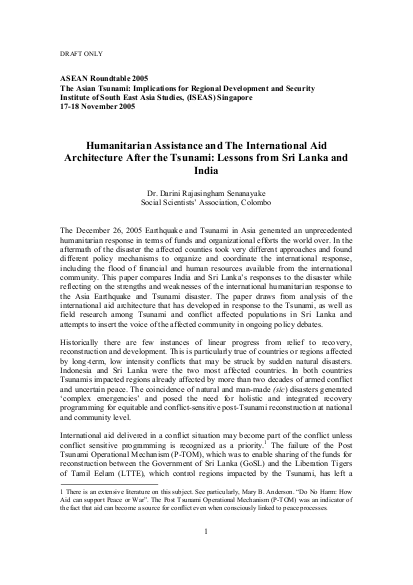
The December 26, 2005 Earthquake and Tsunami in Asia generated an unprecedented humanitarian response in terms of funds and organizational efforts the world over. In the aftermath of the disaster the affected counties took very different approaches and found different policy mechanisms to organize and coordinate the international response, including the flood of financial and human resources available from the international community. This paper compares India and Sri Lanka’s responses to the disaster while reflecting on the strengths and weaknesses of the international humanitarian response to the Asia Earthquake and Tsunami disaster. The paper draws from analysis of the international aid architecture that has developed in response to the Tsunami, as well as field research among Tsunami and conflict affected populations in Sri Lanka and attempts to insert the voice of the affected community in ongoing policy debates.